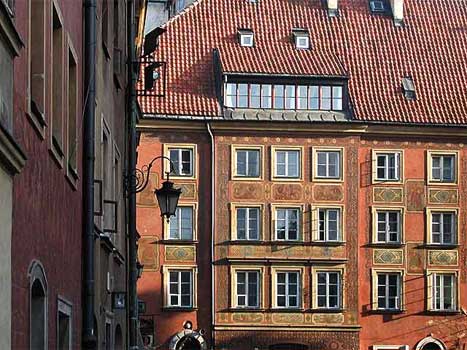I have always been fascinated with the process of rebuilding of Polish major cities after the WW2. For me it is an amazing phenomenon. There had been a city, next there were ruins, which eventually turned into a city again. Pure magic!
Let`s see how much effort Poles had to put into the work.
Warsaw should go first as Poland`s capital and most heroic city ever.
The losses of Warsaw during WW2:
1. 800.000 people dead (that is twice as much as American army casualties which amounted to 400.000).
80 percent of the left riverside Warsaw ceased to exist, with such major districts as the Old Town, the New Town and Downtown.
10% in September 1939, 10% during Warsaw Ghetto Uprising (Germans levelled the Jewish district to the ground), 30% during Warsaw Uprising 1944. The remaining 30% are houses intentionally destroyed by German demolition units which carried Hitler`s mad order to eradicate Warsaw from the surface of the earth.
Warsavians who had survived the war and started coming back to their city after being forcefully expelled by Germans, saw the ocean of ruins in the place where once beautiful city was located.
Some examples
The church of St. Alexander
King Zygmunt III column lies on the ground, broken
The Royal Castle
1945 - the total destruction
Krasiński Palace - only the front wall was left. I cant` show you the photo now.
strony.aster.pl/stolice/pliki/wa_krasinskich01.jpg
Prudential - the pre-war skyscraper
It had a very strong construction of welded steel beams. The famous picture shows the building hit by a 2-ton shell from the heaviest mortar ever used by Germans during the Warsaw Uprising.
The ruin of the Polish Bank was only partly rebuilt after the war, like that famous building in Hiroshima, as a war memento.
Hiroshima - the Bomb Dome
The Old Town



Let`s see how much effort Poles had to put into the work.
Warsaw should go first as Poland`s capital and most heroic city ever.
The losses of Warsaw during WW2:
1. 800.000 people dead (that is twice as much as American army casualties which amounted to 400.000).
80 percent of the left riverside Warsaw ceased to exist, with such major districts as the Old Town, the New Town and Downtown.
10% in September 1939, 10% during Warsaw Ghetto Uprising (Germans levelled the Jewish district to the ground), 30% during Warsaw Uprising 1944. The remaining 30% are houses intentionally destroyed by German demolition units which carried Hitler`s mad order to eradicate Warsaw from the surface of the earth.
Warsavians who had survived the war and started coming back to their city after being forcefully expelled by Germans, saw the ocean of ruins in the place where once beautiful city was located.
Some examples
The church of St. Alexander
King Zygmunt III column lies on the ground, broken
The Royal Castle
1945 - the total destruction
Krasiński Palace - only the front wall was left. I cant` show you the photo now.
strony.aster.pl/stolice/pliki/wa_krasinskich01.jpg
Prudential - the pre-war skyscraper
It had a very strong construction of welded steel beams. The famous picture shows the building hit by a 2-ton shell from the heaviest mortar ever used by Germans during the Warsaw Uprising.
The ruin of the Polish Bank was only partly rebuilt after the war, like that famous building in Hiroshima, as a war memento.
Hiroshima - the Bomb Dome
The Old Town



